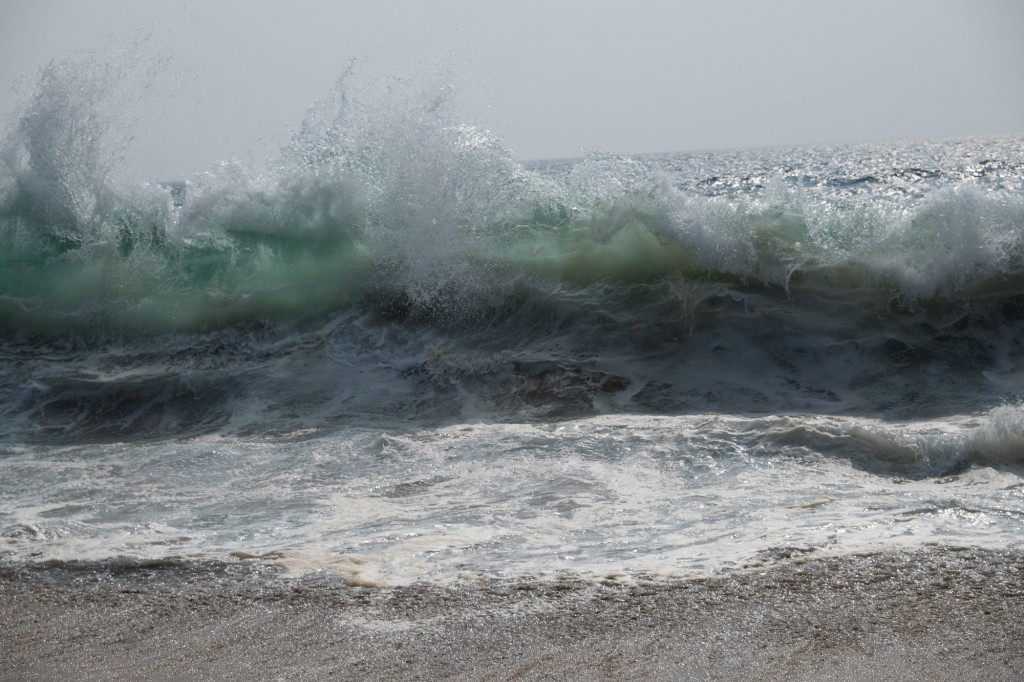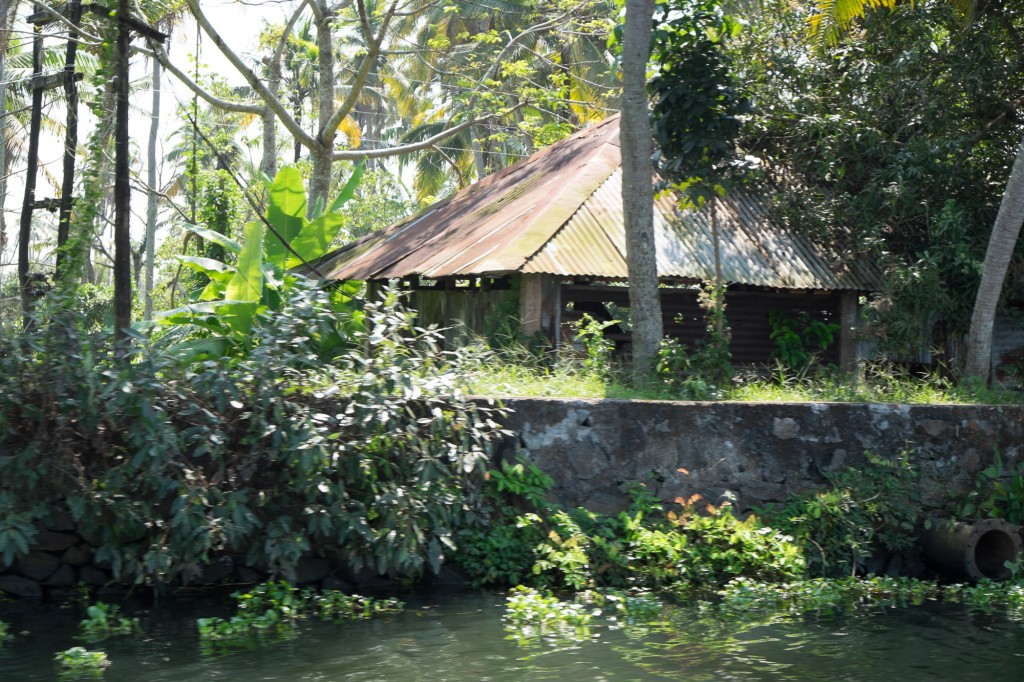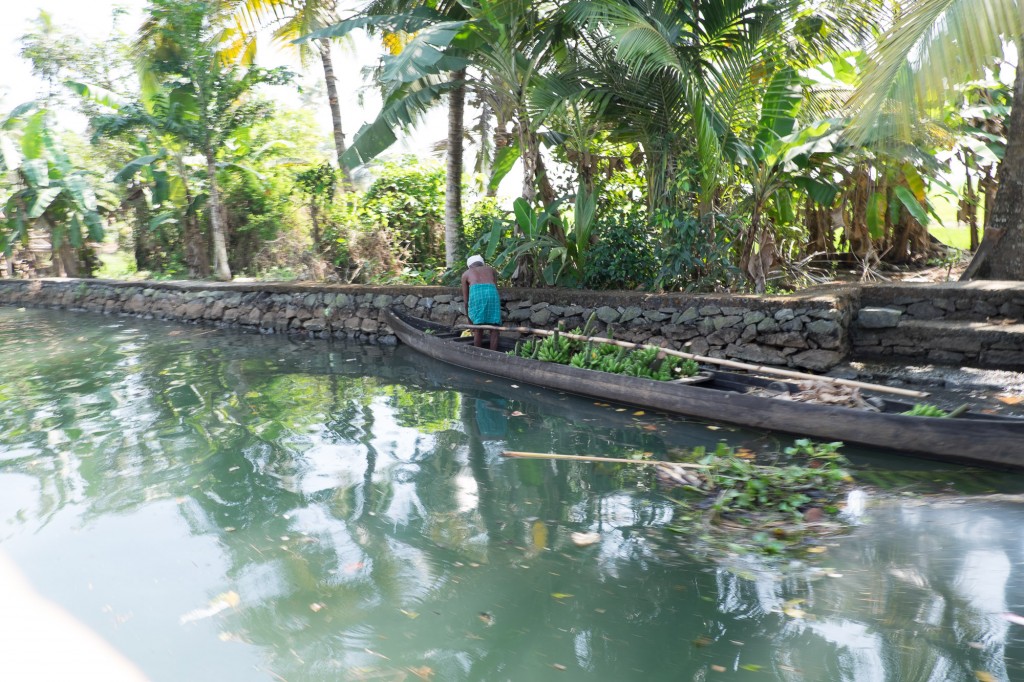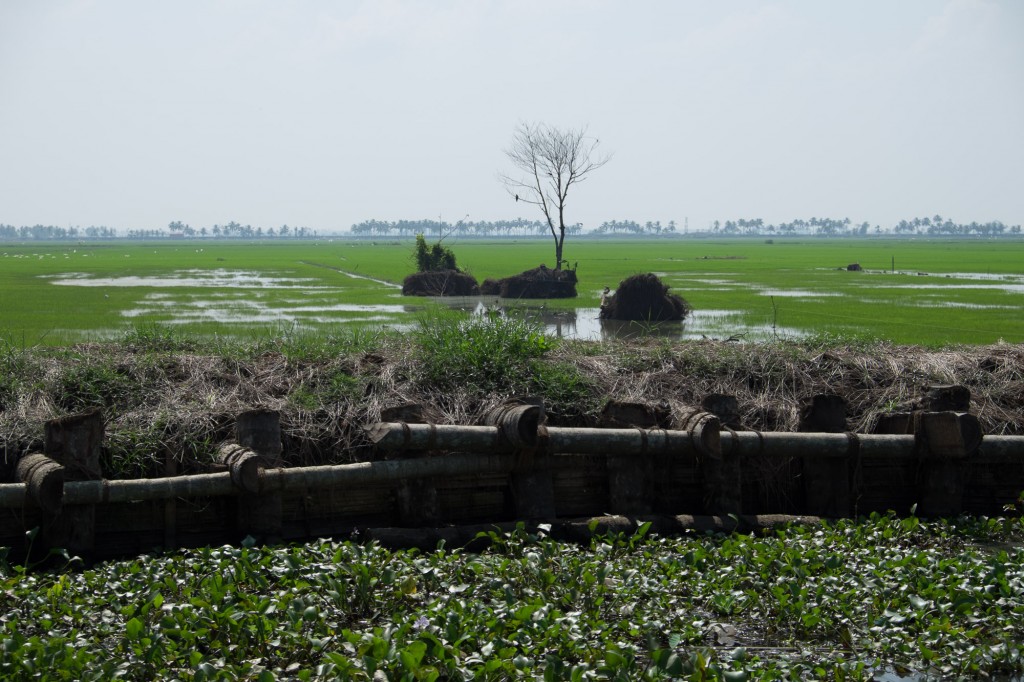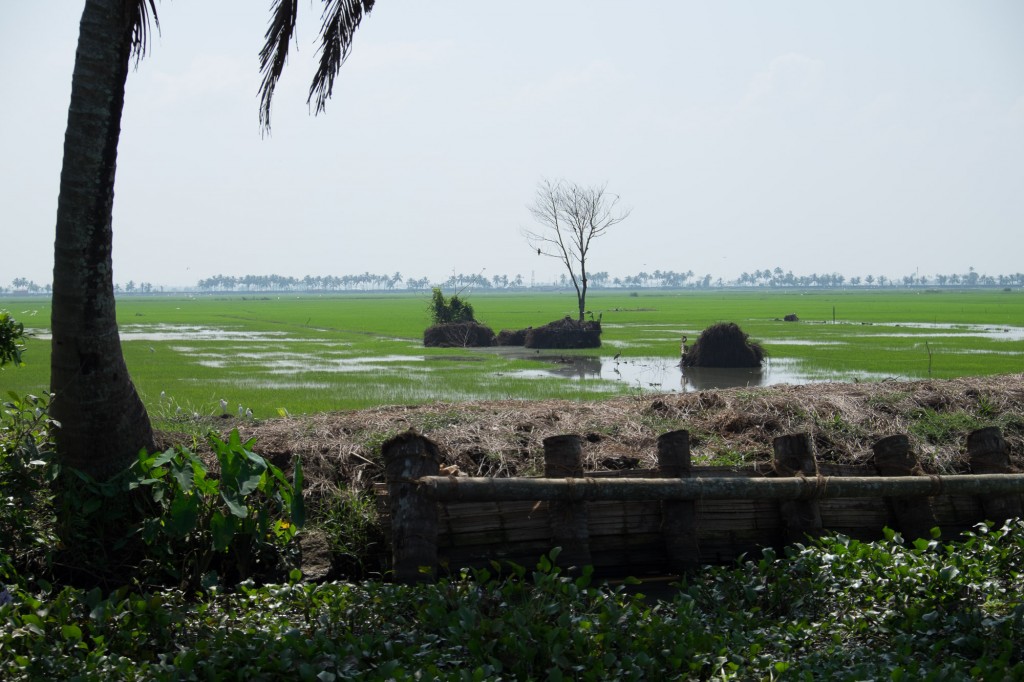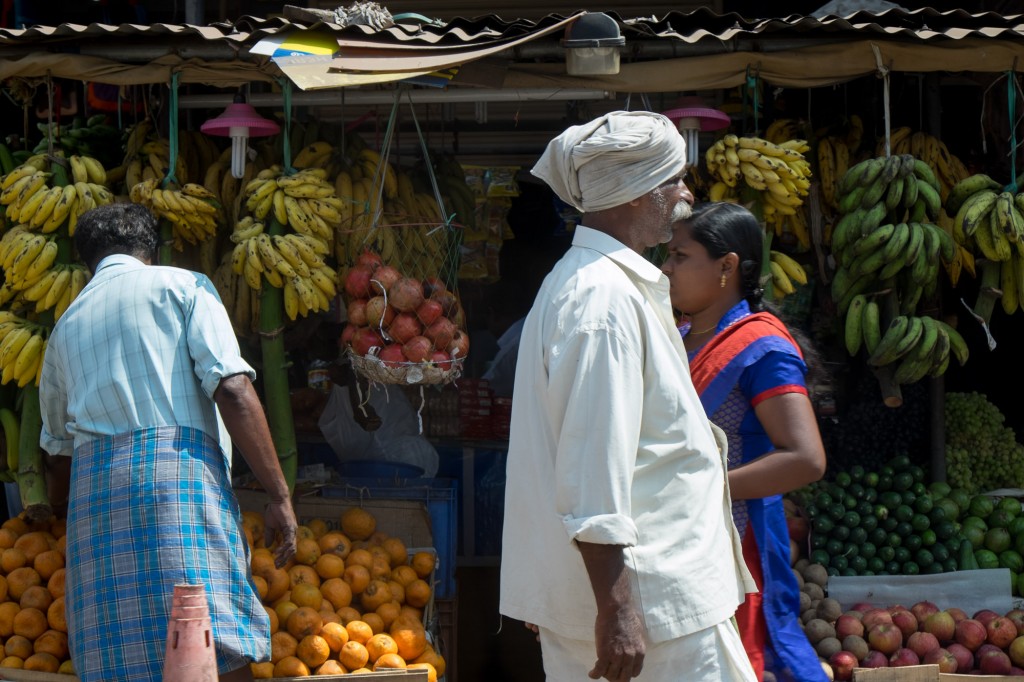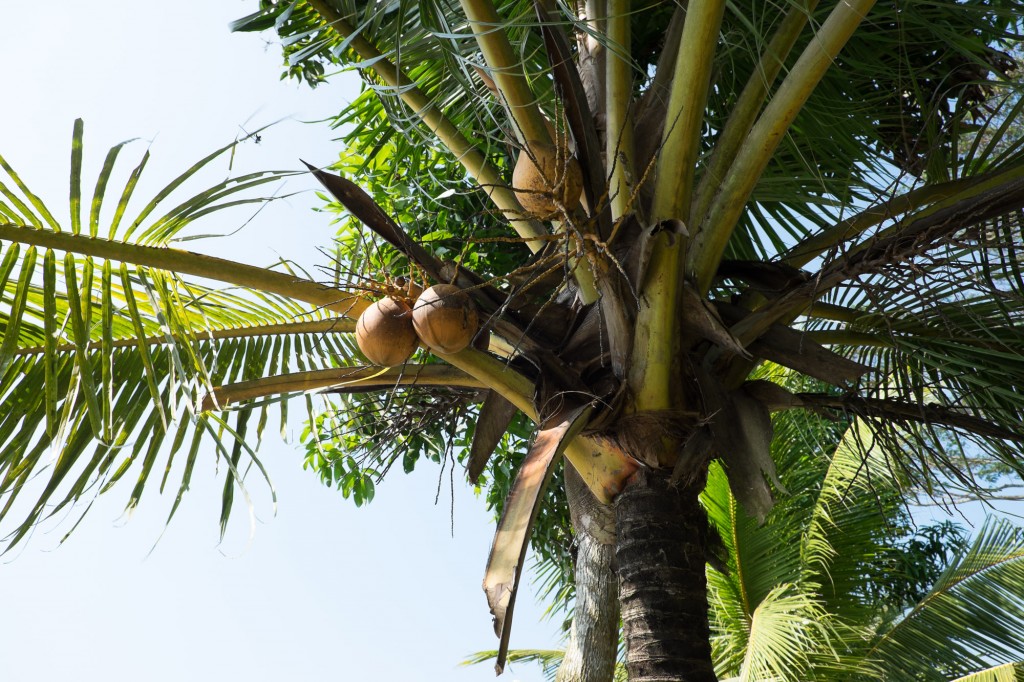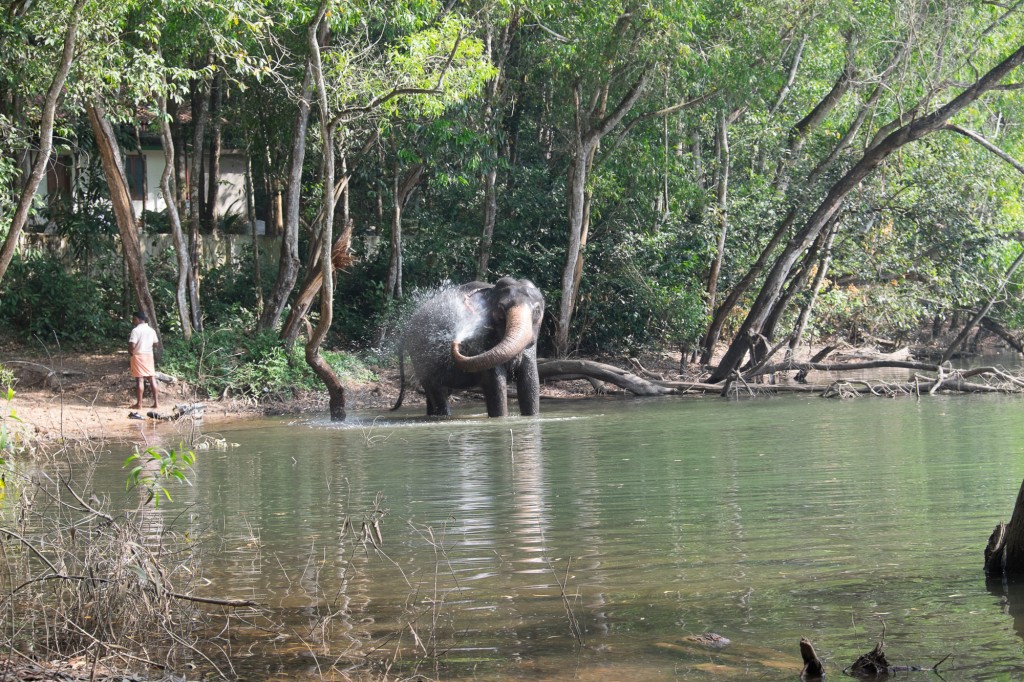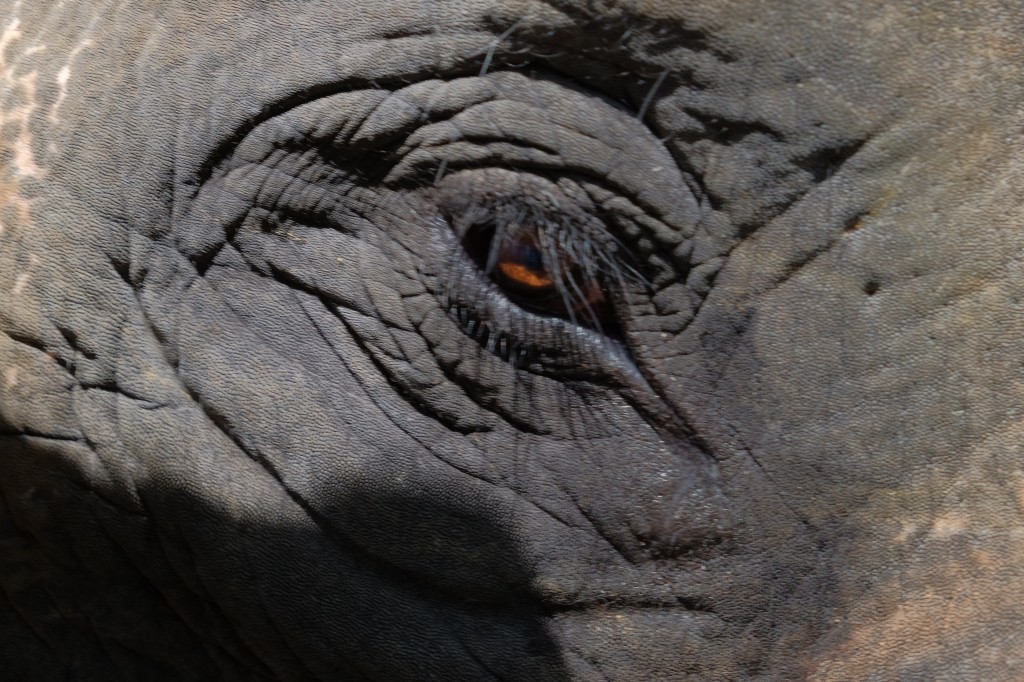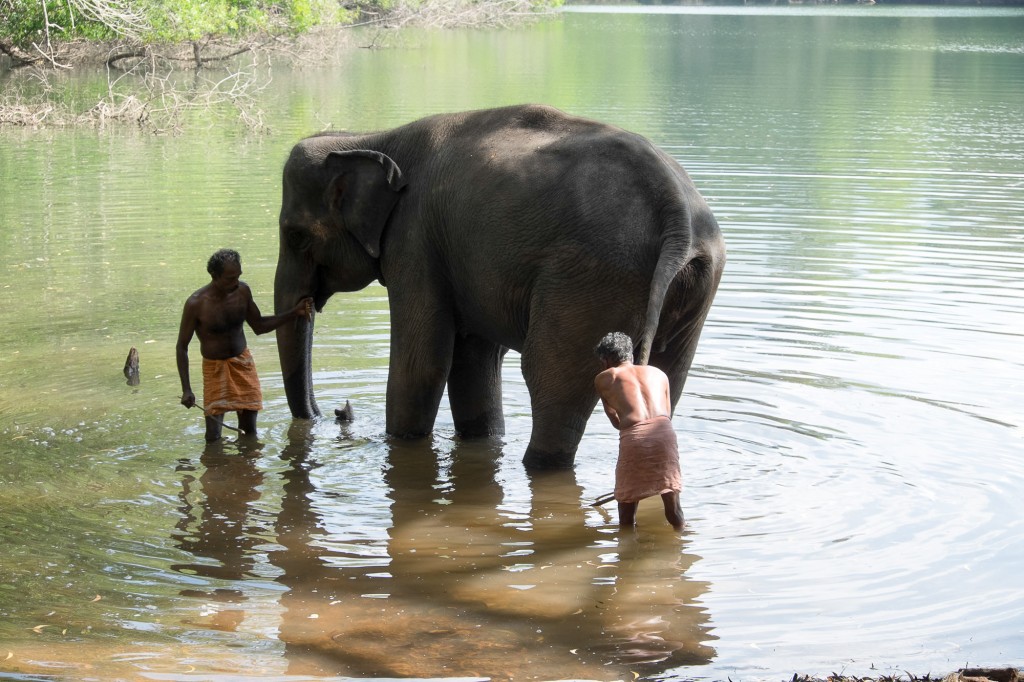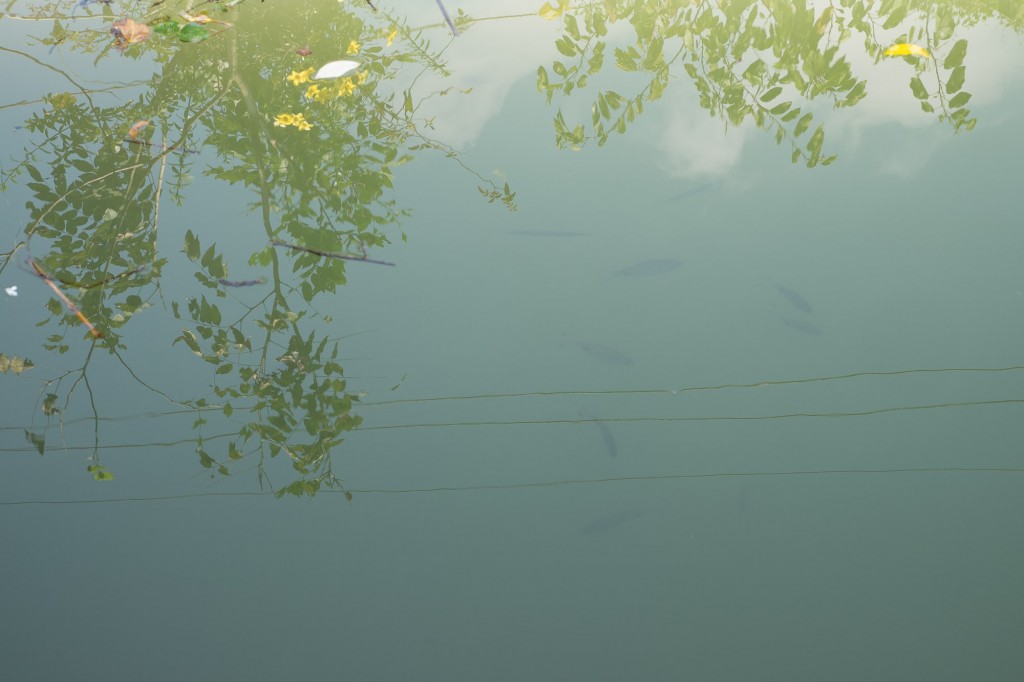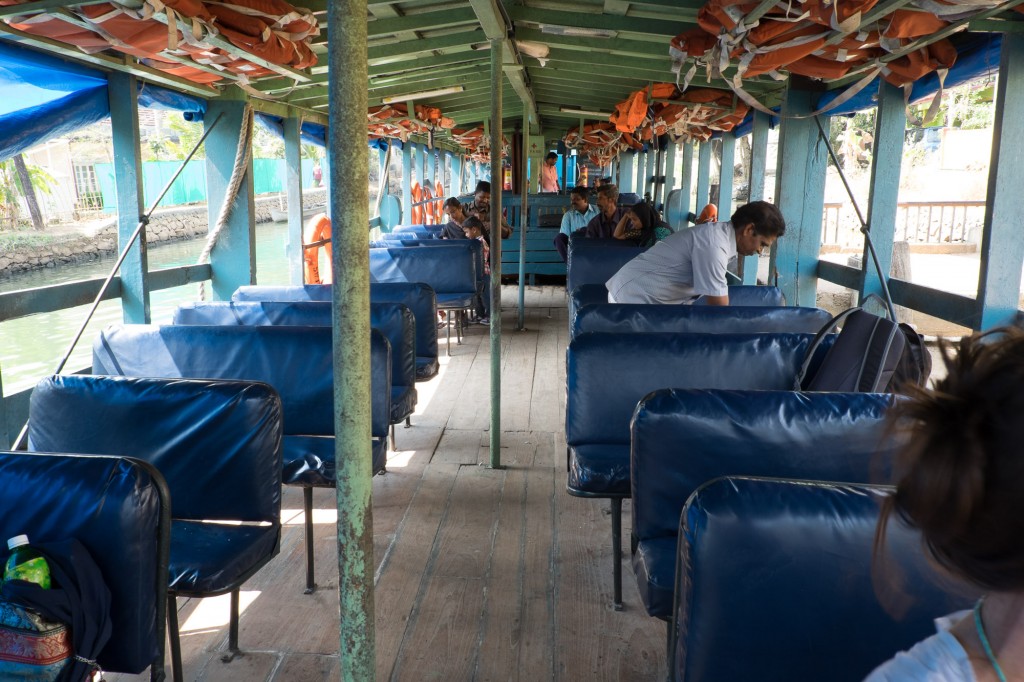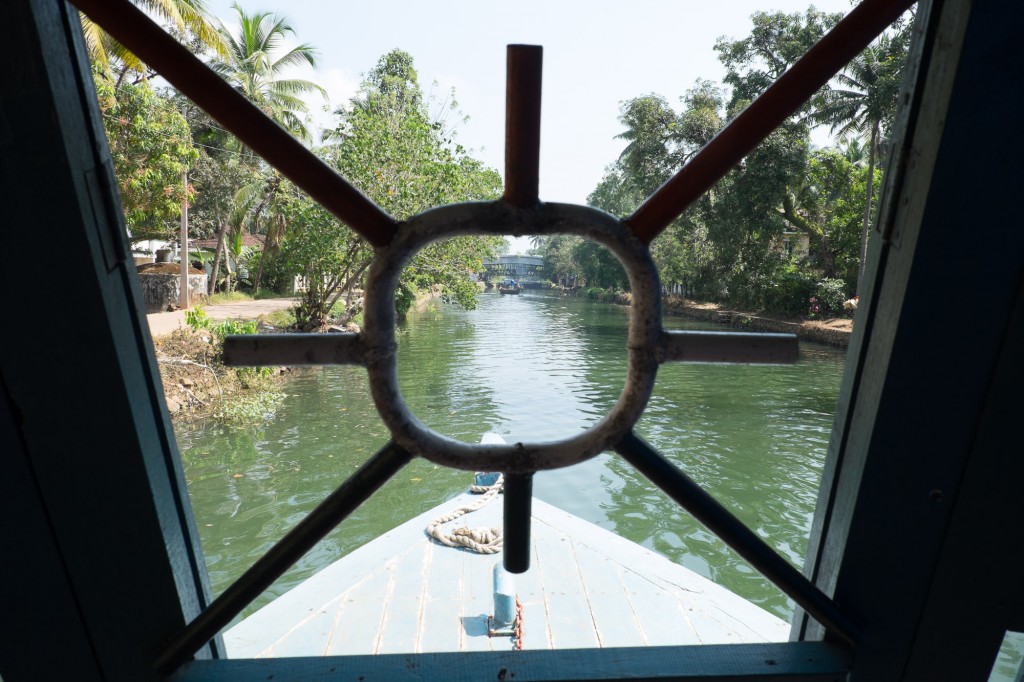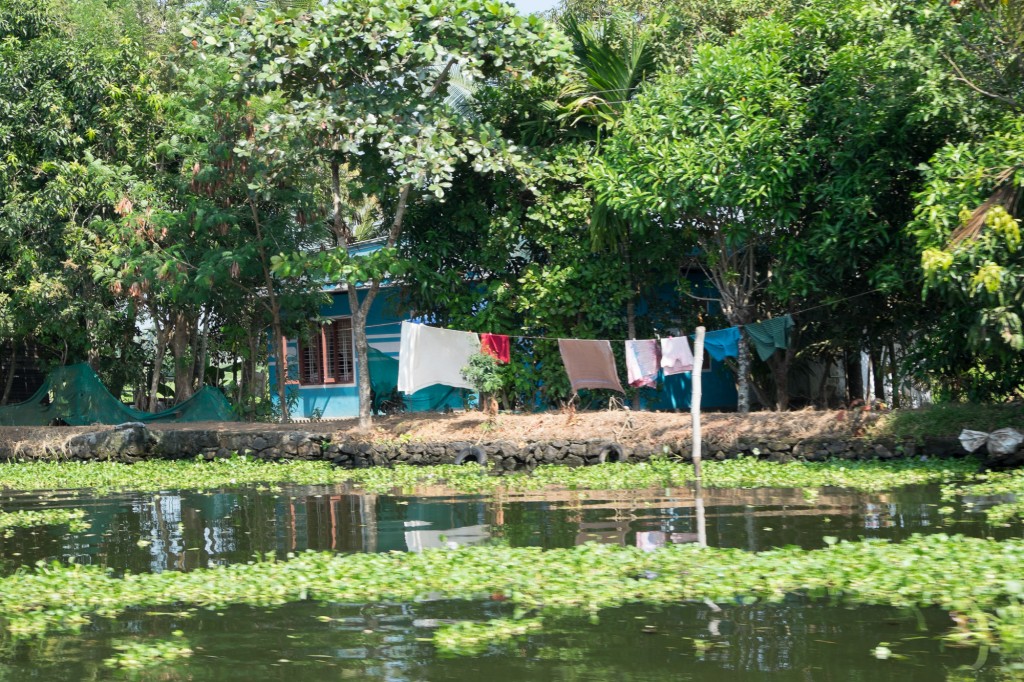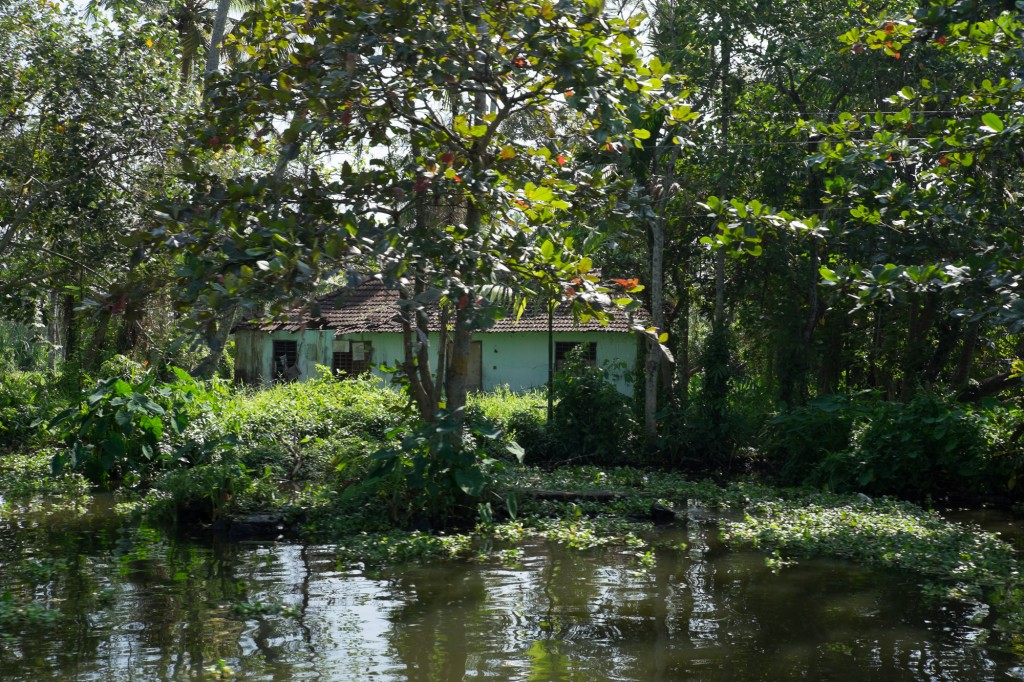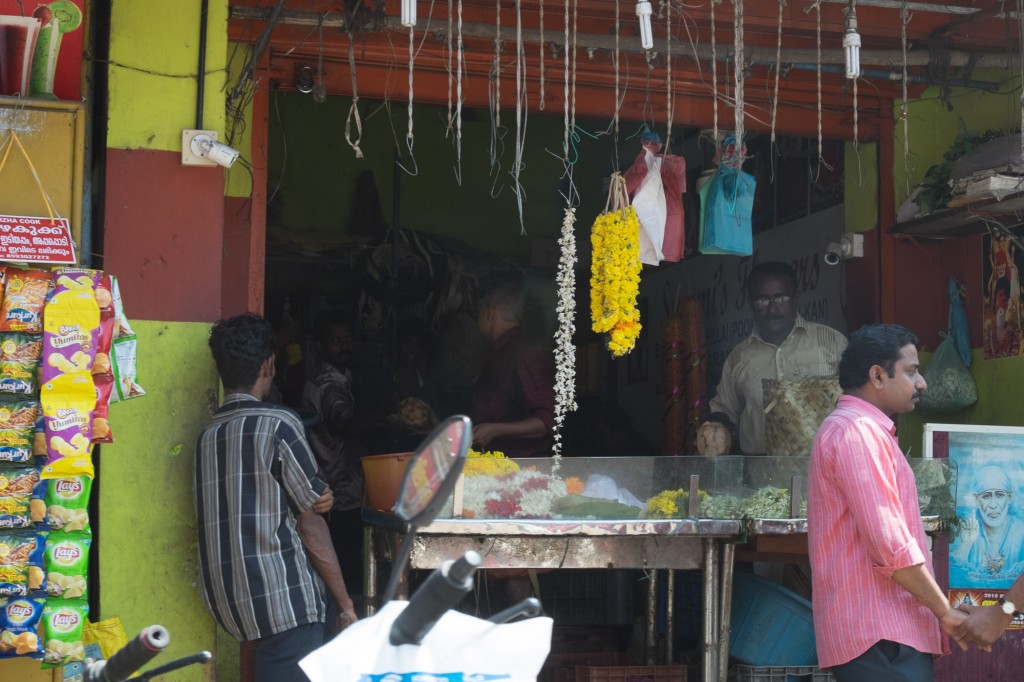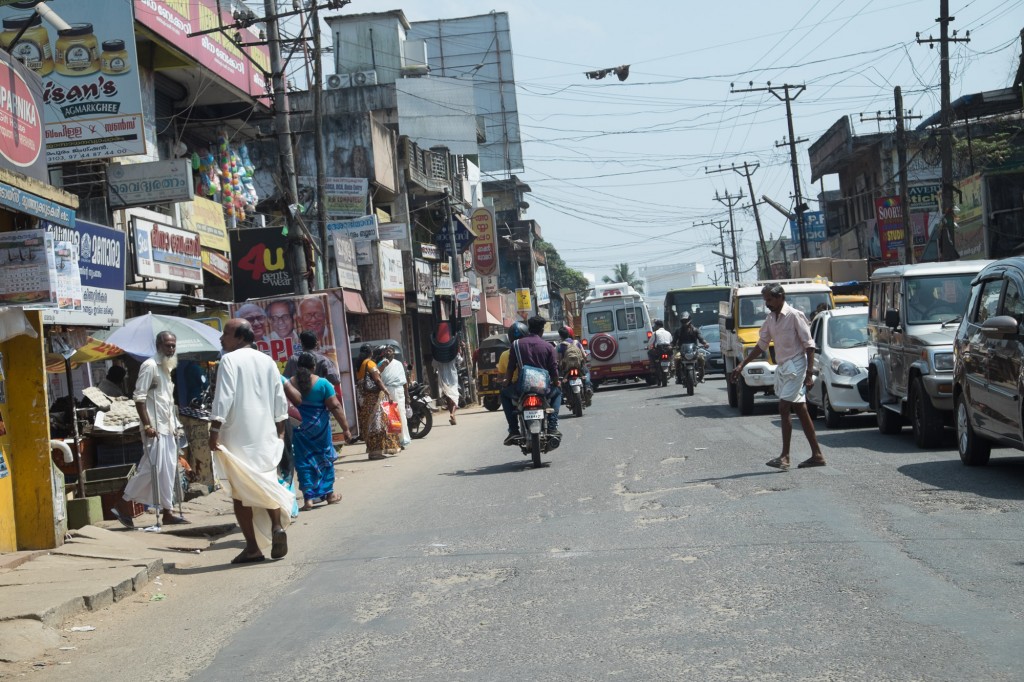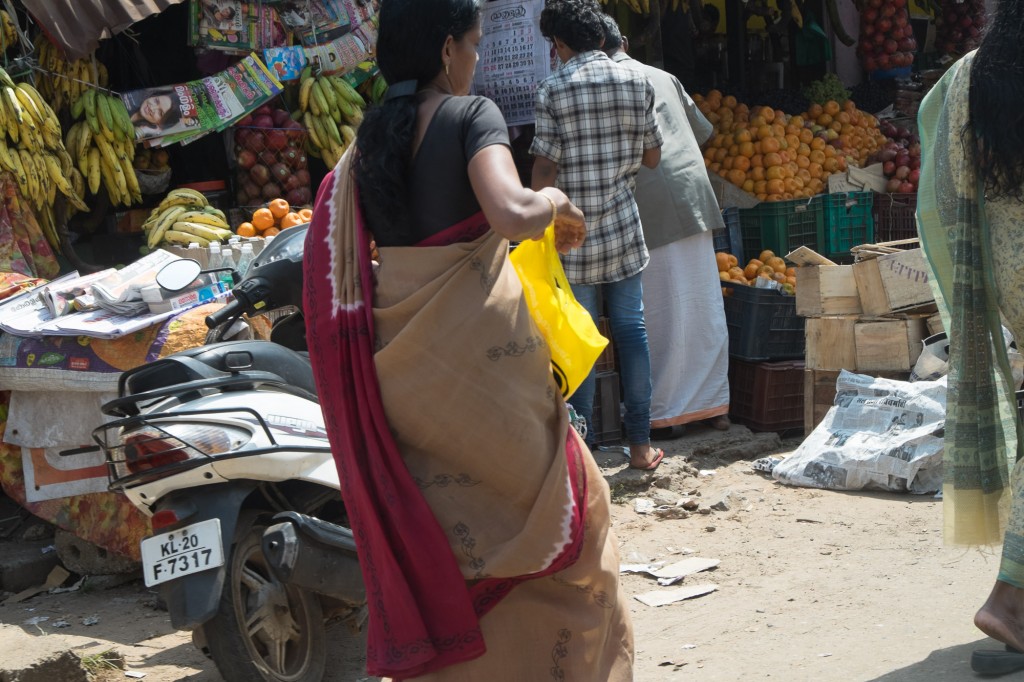It’s easy when in England to think of yoga purely as a physical subject, but in India the deep history is there all around you, in the people, in their deity’s and symbols, the animals, the plants, and underneath you in the very roots and soil. It’s in the water and there is so much of that in Kerala seeping in. It’s in the waves that move in deep layers and undercurrents as though inside the body like the breath in pranayama, and somehow one cannot be immune to it.
The experience of India continues to seep in and I feel some sort of folding seam happen where one place stops and the other starts, it’s very hard to say exactly where this happens and it’s changing every day. It’s as though I’m describing two porous vessels, but also separate and very different in form, and I am having some difficulty in trying to bring two worlds together; my life and work as an artist in England and my experience in India as a yogi. I feel at times as though they are almost in conflict with one another. So on returning I was greatly re-assured by this wonderful email and then a follow up conversation with my good friend and colleague Ray Kohn:
“I want to thank you for the Indian blog: you are a wonderful writer. I could almost feel myself there! What I found particularly fascinating was the emphasis that Prashant was giving to the breath – something I only REALLY understood from when I was very ill. It is odd how only those extreme circumstances sometimes strip away many assumed notions and bring you much closer to your body’s interconnection with the movements of nature – the sea, the wind, the breath. Perhaps disability must, on occasion, have the same effect.
I am making another assumption – that you have returned to the UK and not stayed in India watching life on railways plaforms 🙂
I hope you and Geoffrey are happily breathing in Nottingham and not missing Talya’s cooking. How are you both?
I loved your elephant Christmas card. My only problem at the moment is that I seem to be overwhelmed with some sort of musical force … notating is like struggling with an elephant … it is too big for me to see it all at once let alone hold it in my arms. So I try to move with it by breathing (knowing?) before sitting down to notate. Sometimes it works: that is wonderful as it feels as if I am floating without any tensions holding me down. Sometimes I am so frustrated with the outcome that I destroy it and realise that I have not really “known” what I was doing from the start. What are you up to creatively at the moment?;”
love
Ray
I was inspired by Ray’s description of the elephant in him, and in his own process of writing music.
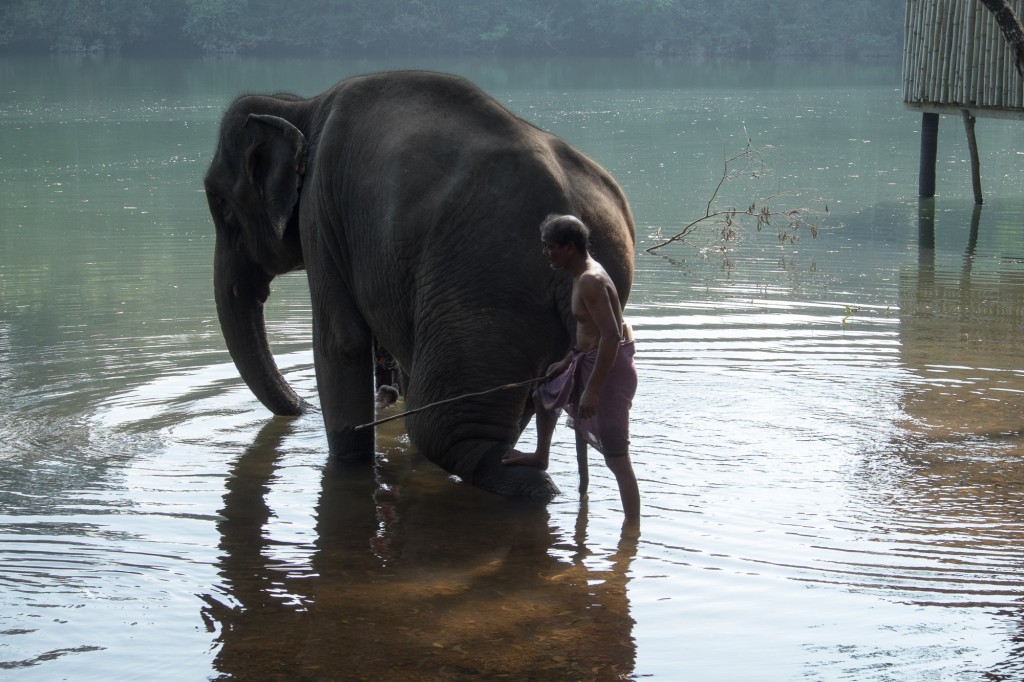
It chimed in too, with this ‘back home in England blog, which I’ve been trying to write for 3 weeks! I keep re-writing it as things change slowly, both feeling the affects as witness and instrument as I try to explore nature and the extent to which we are part of it. I realise that in trying to re-think my experiences as a unified co-herant whole I waste energy, instead it’s more complex than that and I think there is a need for various manifestations of the whole. Each part is in a sense like a separate vessel, it’s distinctness is necessary to support the spiritual and creative growth of the source, and each vessel starts with the same clay. A multiplicity of interaction acts as a vehicle for understanding ourselves. There are many ways of seeing
Prakrity is the Sanskrit word for nature. It appears as an important concept in Indian Philosophy, and of particular importance to us yogis. We are part of nature or ‘prakrity’, and through Yoga we are given an opportunity to know and understand natures energies within ourselves. We study this, and prepare the ground to make our minds fertile for our own evolution. We change from being passive recipients of something we don’t understand to becoming active agents in a process of growth, that’s the key.
How does this happen? We’ve been given both a guide and a map: Iyengar Yoga. Or Patanjali Yoga as BKS Iyengar describes it.
The last 2 weeks of our trip were spent in Kovalam studying with Sue Lovell and Darrel Turney, now this place really is steeped in yoga and we feel marvelous here. Sue and Darrel are wonderful, both Iyengar Yoga teachers who they have taken care to study yoga philosophy and to pass it on to their students. In Kovalam Sue invites us to study Iyengar’s commentary on Patanjali’s Yoga Sutras with her, and it’s great as we talk together to understand the roots of yoga. Both Sue and Darrel are artists too, and like Geoffrey and I appreciate the beauty and mysticism in yoga. A year or so ago Sue taught an intermediate class and brought into her work with us on Pranayama, Chapter 4 of the yoga sutras. One sutra she read out loud to us in particular touched me:
“Nature’s efficient cause does not impel its potentialities into action, but helps remove the obstacles to evolution, just as a farmer builds banks to irrigate his fields” BKS Iyengar Translation in Light on The Yoga Sutras of Patanjali Pada 1V.3
So when on this trip to India I had experienced the multifaceted flow of breath in Prashant’s class, and then on arriving in Kerala we were traveling along the canals of the backwaters; I saw the paddy fields running right alongside the dwellings of local villagers, and there, a new level of understanding arrived.
When looking at these paddy fields, and considering the affects of the annual monsoon it all becomes clearer to me. Rice has been grown here for thousands of years, but not by chance. Rice is an important food, it is mentioned in the vedas 1500 – 800 BC and it is the first food given to babies when they start eating solids. The traditional method for cultivating rice is flooding the fields while, or after, setting the young seedlings. This simple method requires sound planning and servicing of the water damming and channeling, but reduces the growth of less robust weed and pest plants that have no submerged growth state, and deters vermin.
To create the sustainable structure for rice to grow, the farmer understands and knows how to harnesses the natural energy of water in both drought and monsoon. It’s quite extra-ordinary to witness all this knowledge, precise work and exact timing reaping the rewards in those paddy fields. In yoga we do this with the body so that the breath can cultivate the mind.
We’ve been back in England now for just over 3 weeks now, and it’s bliss to breathe the clear February air. It’s almost impossible to imagine the 35 degree heat and high levels of humidity we experienced in Kerala. I experienced there how a spinal twist comes so naturally as with greater ease we turn and squeese our bodies as though an orange full of juice. Those in our 6.30pm monday class in West Bridgford, despite zero degrees outside would have been asked to try and experience it! We were never far from the naturally juicy fruits of this land which grow in abundance
This week we’ve had lots of wonderful bright, crisp frosty days in West Bridgford, the rain water in various pots in our garden is under ice and the air is clear and easy to breathe, and I’m very grateful for that. Things feel more brittle, energies are totally different, I’m glad to kick up into handstand as it gets me warm. We utilise a lot of our energy in the process of generating heat. Where the deep shade of a coconut palm was a godsend in India, here Geoffrey and I head out into the sunshine, the birds do it too. In Kerala the Coukal bird hopped amongst and under the palm branches, taking in insects from the branches and air, a strange movement from such a big bird, as it managed to keep in the shade conserving efforts. Yet here at home I can see a big pigeon in our front garden now basking for a moment in the sunshine whilst making energetic pecks at the hard dry ivy berries. Such energy expenditure would be impossible in Kerala for person and bird alike.
It’s not so easy to feel the flow of movement here and the results of stillness seem to lead to a cold stiffness, it’s harder to be still and feel good, so we seek flow and dynamic movement to keep us warm to energise us. Certainly in 33 days in Kerala I never saw anyone running! In fact, one day in India I was walking quite quickly early in the morning to daily class, thinking I might be a little late I heard a quiet voice of a man who I’d overtaken saying ‘don’t rush there is time’. I found myself noticing my change in breath as he spoke and a widening and softening of everything. And certainly I know I’ve handled my own energies in England by wanting to march about the place, even cutting things fine so that I have to move quickly. In India Geoffrey reminded me each morning that we should allow time so that we didn’t work up a heat before starting yoga at 8am. Once the heat builds in the body it’s hard to get rid of and we found only a cold shower would rid us of it then or a session of pranayama. So part of the work in yoga is to learn about the underlying qualities of things, for example to see how the heat and energy works in ourselves and to listen, to tune in to nature and then choose which asana to do, what food to eat and to bring about balance.
In ancient yoga philosophy we learn that all nature is made up of an interplay of 3 fundamental energies: or Gunas. In very simple terms one could think of Sattvic as clarity, Rajasic as dynamic movement and Tamasic as inertia. Although often people like to try and identify which category they most likely fit into, but we are mix of all three. It is a debatable point whether each energy is neutral of should be viewed as positive of negative. Certainly we are made of all and an understanding of the energy lying at the root of matter, mind and body are fundamental to yoga. These energies however, get a grip over us and even when we might feel on some level that the emphasis of one is not useful we don’t seem to be able to change. Whilst sometimes we feel stuck gripped by an inability to get on with anything, at other times we might move so quickly and with such ego that we don’t connect to anyone or anything.
In Patanjali’s yoga sutras pada 1V; which is the final chapter in the book. BKS Iyengar explains that to be free of the gunas is the summit of yoga. Patanjali lays it out clearly and Iyengar gives us the practical tools to make it happen.
So we learn in yoga how the complexity of these energies work in ourselves; and how we are made up of a mix of undesirable/negative, neutral and desirable/positive qualities. A part of our journey is to study and notice things around us as well as in ourselves as though in a two way dialogue. We learn that nature is a complex mix of all these things depending on context, material, or personalty and we are part of that nature and we are derived from it: ‘prakrity’.
So ultimately we are trying to work towards releasing ourselves from their gravitational pull, we can’t do that unless we know how they work on us and how we can work with them. I felt this was one of the key points that Prashant taught me, developing my awareness for example in his study of the fish could directly help me with the moving flow of my breath in pranayama. The 3 Gunas aren’t static, and ultimately we are trying to work towards releasing ourselves from their gravitational pull, we can’t do that unless we know how they work on us and how we can work with them. I felt this was one of the key points that Prashant taught me, developing my awareness for example in his study of the fish could directly help me with the breath’s flow of movement in pranayama.
The Gunas can be useful on the path of personal growth, if we know how to change these energies through yoga we can work better for self improvement. For example; Rajas can often be the catalyst for change positive or negative, whilst Sattva can help to harmonise that change, Tamas will put a check on that change, even stop it.
So pretty simplistically what can we learn about nature through yoga?
We learn how the complexity of these energies work; a mix of undesirable/negative, neutral and desirable/positive qualities. For example the energies of the elephant, and dragonfly are so completely different. The elephant is big and does not make delicate, dynamic changes in movement, it gets hot and needs to go often to immerse in the water.
The lizard soaks up the heat here in early morning, on the coconut palm to gather the heat up so that it can move swiftly.
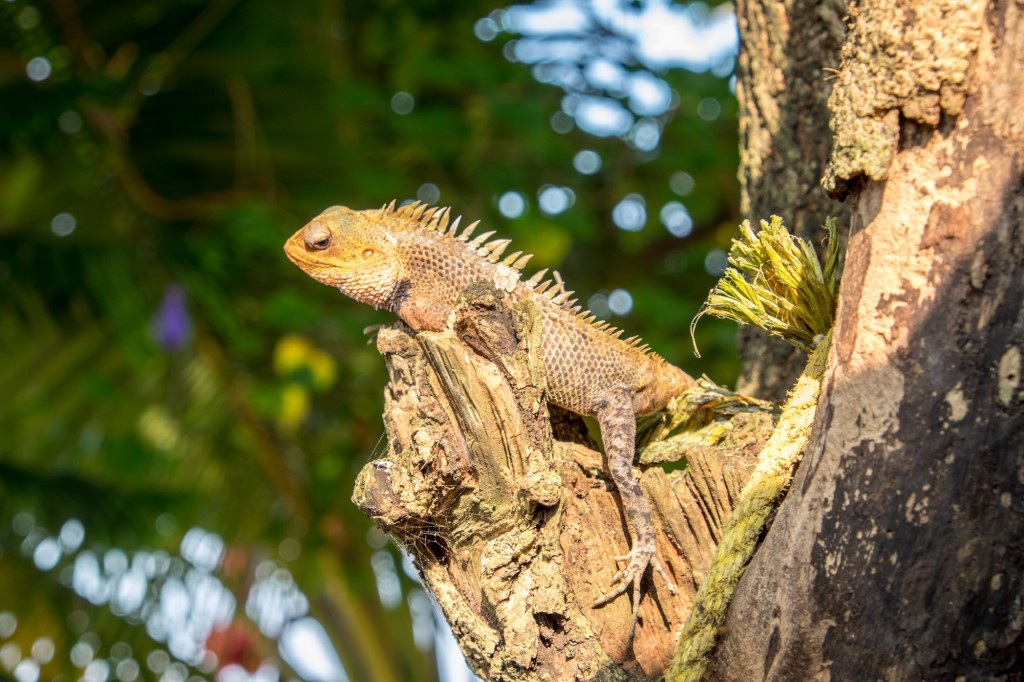
But the dragonfly is light and can dart about in the air, it keeps moving and generates a flow of air all around.
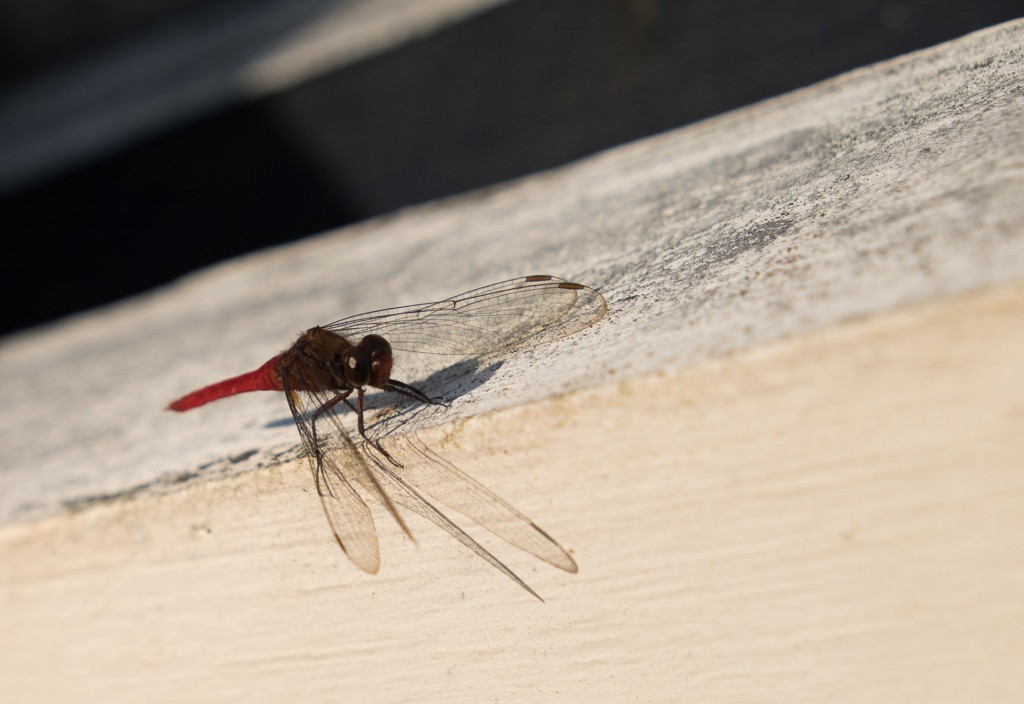
If these creatures are allowed to follow their natural tendencies they survive independently, but when such animals are kept in captivity they loose connection with their natures; the elephant in captivity has to be washed by human beings and coaxed with a stick into the water. Meanwhile the human being goes to the gym for a rowing machine not downstream on a boat to find food. Both elephant and human being become disconnected from the waters.
In the ‘developed’ world we seem to have become out of sorts, confused by daily life. We try to control the flow of food, heat, cool, money, transport, people, and here in England I notice it particularly, as my feet are swathed in socks and slippers or big boots. Where in India my feet were open to the air all the time and I could feel the ground a couple of centimeters under the soles of my flimsy slip on shoes. We live our lives separately from nature, living in high level protected environments closeted from the world I saw on the streets in India. Gosh I notice the contrast now: the very vegetables we eat are packaged so they look inert. It is as though we were in a fab ‘aircon’ unit, like Dubai airport, we’ve build islands, office blocks and gated communities to separate ourselves from people and nature, and eventually we can’t survive without all that separation. A world largely cut off, so we just stop listening somehow and the mind and body separate.
Yoga helps us with all this, helps us to integrate and be more whole.
As many of you know, I’ve been very interested since the age of 7 or 8 years old in ethics, and as an adult since 1984 I’ve been involved very closely in an arts movement pushing for attitudinal change. In the process I developed an arts charity to remove obstacles, and enable disabled children and adults to develop, shine and grow through creative realisation. Such a process involves a keen and dynamic process of self reflection, so thought fulness, positive action towards self and others are bound up with this too. On our return from India I’ve been thinking about this, because it’s incredibly difficult to make change happen and we can’t make it happen without awareness. When in a country like India especially I think for the first time, it’s easier to notice things like a child can, and such an experience awakens us and our awareness towards nature and other people. On returning to our normal lives yoga becomes even more relevant, as we need help to stay awake to these possibilities and not become numb. We learn in a very practical way about how this works and we begin to learn through practice (abhayasa) how to be aware, and how to break old useless habits and make productive new connections.
Farewell India, Hello England: and an ever expanding inner world!

